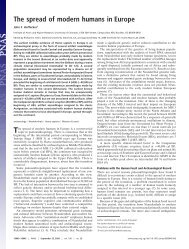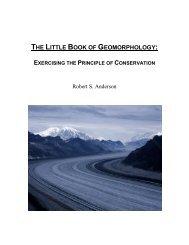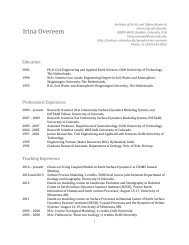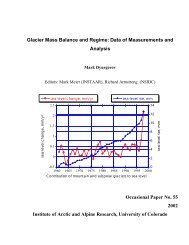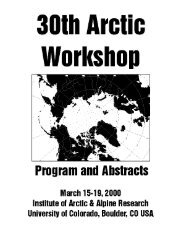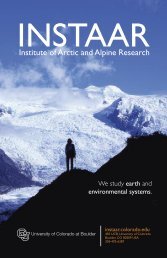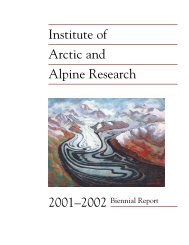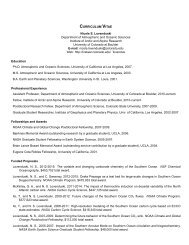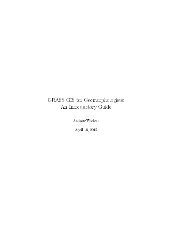Economic Feasibility Study of Colorado Anaerobic Digester Projects ...
Economic Feasibility Study of Colorado Anaerobic Digester Projects ...
Economic Feasibility Study of Colorado Anaerobic Digester Projects ...
You also want an ePaper? Increase the reach of your titles
YUMPU automatically turns print PDFs into web optimized ePapers that Google loves.
This is the estimated conversion rate <strong>of</strong> feedstock from lbs. <strong>of</strong> solids to gas<br />
(3) Biogas produced=methane produced/molecular ratio (.7) <strong>of</strong> methane to biogas<br />
(4) Energy produced in BTUs =biogas produced*Heat content (65) BTU/ft. 3<br />
6.2.3 Production Costs. Production costs for the “typical” scenario were taken directly from<br />
estimates provided by Mr. Williams. Because production costs reported by those<br />
interviewed were substantially lower, the total costs were reduced by 20% to reflect a<br />
scenario <strong>of</strong> “poor” economic conditions.<br />
6.2.4 General and Administrative Costs. This information was provided directly by Mr.<br />
Williams. These values are not likely to vary across economic scenarios.<br />
6.2.5 Interest, Amortization/Depreciation, Taxes. This data was also provided directly by<br />
Mr. Williams. Values are based upon fixed capital costs and are not expected to vary across<br />
economic conditions.<br />
6.3 Sensitivity Analysis. While the enterprise budget estimates that a co-digestion AD<br />
project in the state <strong>of</strong> <strong>Colorado</strong> can be pr<strong>of</strong>itable, changes in only a few key variables can<br />
affect project pr<strong>of</strong>itability significantly. The sensitivity analysis models the change in<br />
operation income (essentially in either the positive or negative direction) when key<br />
operational variables change by 1%. A sensitivity analysis was performed on six<br />
operational variables. The variables included in the analysis were identified by the<br />
literature, technology providers, and agricultural producers as variables that affected<br />
revenues or were subject to frequent or rapid volatility. Results are demonstrated in Figure<br />
6.2, and are discussed below. Estimated changes to operational variables in “typical”,<br />
“poor”, and “favorable” economic conditions are also presented in Figure 6.2. These<br />
sensitivity estimates are based on the entire set <strong>of</strong> indentified variables changing at once, as<br />
compared to only one variable changing at a time as described in the second column <strong>of</strong><br />
figure 6.2. The poor and favorable economic conditions reflected an approximate 20%<br />
change in the expected conditions. The 20% value was estimated similarly to the enterprise<br />
budget, and reflected technology provider and project manager reports. Upper and lower<br />
bound values that are cited from the literature are appropriately referenced.<br />
Production costs and energy production showed the greatest impact on net income. A 1%<br />
change in production costs will change net income by 14.54%. Examples <strong>of</strong> production<br />
costs are maintenance/repairs, and labor. A 1% change in energy production (a function <strong>of</strong><br />
billing capacity and methane production) will change income by 11.14%. Generator<br />
downtime and inefficient feedstock conversion both affect energy production. The high<br />
degree <strong>of</strong> impact on net income shown by changes in production costs and changes in<br />
energy production is consistent with the anecdotal observation shared by producers and<br />
technology providers, and the values obtained provide validation to these reports.<br />
<strong>Economic</strong> <strong>Feasibility</strong> <strong>Study</strong> <strong>of</strong> <strong>Colorado</strong> <strong>Anaerobic</strong> <strong>Digester</strong> <strong>Projects</strong><br />
Prepared by Dr. Catherine Keske, <strong>Colorado</strong> State University<br />
August 2009<br />
Page 48 <strong>of</strong> 79



